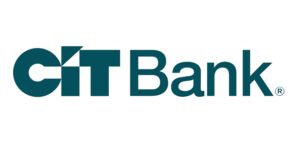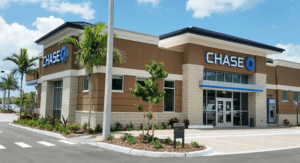
If you’ve been researching savings accounts, you might find that online banks offer higher interest rates than your typical big bank. An important thing to keep in mind for both online savings accounts and traditional savings accounts is to make sure they are FDIC-insured before you make your decision. Continue reading to learn more about how online savings accounts work.
How Online Savings Accounts Work
Just like a traditional savings account, you simply deposit your money into your account. Then, the bank can use that money to lend out to customers through personal and business loans. The borrower pays interest on their loan to the bank.
The reason why online banks can offer much higher interest rates on their savings products is because they do not incur the overhead cost of maintaining physical branches. Keep reading to learn more key differences between having an online savings account and a traditional savings account.
Online Savings Vs Traditional Savings Accounts
Consider these variables when choosing which type of savings account to open up:
As mentioned above, online savings accounts usually have higher APYs than what can be offered by traditional banks, ranging from 1.5% to as high as 2%.
Because these products compound interest, you will be able to grow your savings much quicker. In contrast, traditional savings accounts usually offer rates below 1%, with the average being about 0.1%.
Some online savings accounts advertise no monthly maintenance fees, however those fees are usually just waived if you can manage a minimum balance.
Traditional savings accounts do this too, so there’s no escape. The only thing you can do is compare both accounts to see which ones have waive their fees the best.
Most traditional banks now let you apply for an account on their website as well as at physical branches. Online banks will guide you through a similar, straightforward process on their website.
Whether you apply online or in person, the personal info required is usually the same. You’ll need a government-issued ID, your SSN, and a mailing address.
Average time of account approval will depend on the bank, though it’s typically quick. Approval can take anywhere from 10 minutes to 1 day, with online banks usually making a quicker approval.
Most savings accounts, online and traditional, require that you deposit money into the account to officially open it.
The amount in question will depend on the bank you decide to work with (some require as little as $1).
To make sure you get the best deal for you, make sure you do your research into each of your bank choice’s minimum deposit.
Both online banks and traditional banks are required to limit the number of transfers and/or withdrawals that customers make from a savings account (for transfers, usually no more than 6 per month).
Online banks may also take slightly longer to process transfers and withdrawals. Learn each bank’s transfer/withdrawal policies and what fees you might incur by exceeding the limit.
Generally, deposits are going to be slightly easier with a traditional savings account. All you have to do is stop by your nearest branch and deposit your check or cash in a couple of minutes.
Online banks require a few more steps. You can either deposit your funds into a traditional bank that you currently bank with and transfer the funds over or use an ATM that is in your bank’s network.
This area is another spot where traditional banks may have an advantage over online banks.
Using a traditional bank, you have the option of interacting face-to-face with your teller to talk about your needs.
Online banks do not provide this option, but they do still offer excellent customer service using the phone or chatrooms.
Traditional banks may also have the advantage when it comes to selection of financial products, like mortgages, auto loans, insurance policies, and more.
Many online banks specialize in just a few types of accounts at most.
If you’re hoping to bundle several products from the same institution for easier banking, consider a traditional bank instead.
How To Open An Online Savings Account
Once you’ve decided to go with the online banking route, here are the general steps on how to get your account set up:
- Choose your bank. Research the terms and yields of different online savings accounts to find one that fits your needs.
- Gather your documents. This includes a government-issued ID, your Social Security number, and proof of residence/mailing address.
- Submit an application. Fill out an application online with your personal information.
- Fund your account. Transfer funds into your online savings account and include at least the minimum balance amount.
Recommended Online Savings Accounts
 Open a Discover® Online Savings Account for all these features: • Earn $200/$150 Bonus with promo code LOP325 by 9/11/2025 • Earn high interest rate of 3.50% APY • No minimum opening deposit, no minimum balance requirement, and now no fees • Interest on Discover Online Savings Accounts is compounded daily and credited monthly • Manage your account online or with the Discover mobile app • FDIC insurance up to $250,000 • See advertiser website for full details To qualify for Bonus: Apply for your first Discover Online Savings Account, enter Offer Code LOP325 at application, deposit into your Account a total of at least $15,000 to earn a $150 Bonus or deposit a total of at least $25,000 to earn a $200 Bonus. Qualifying deposit(s) may consist of multiple deposits and must post to Account within 45 days of account open date. Maximum bonus eligibility is $200. What to know: Offer not valid for existing or prior Discover savings customers. Eligibility is based on primary account owner. Account must be open when bonus is credited. Bonus will be credited to the account within 60 days of qualifying for the bonus. Bonus is subject to tax reporting. Offer ends 09/11/2025, 11:59 PM ET. Offer may be modified or withdrawn without notice. Due to new customer funding limits, you may wish to initiate fund transfers at your other institution. For information on funding, see FAQs on Discover.com/Bank. |
 |
 |
Bottom Line
Online savings accounts can be a great tool for you with several great perks such as high APYs, mobile convenience, and generally lower fees. To make the best decision for you, compare the different terms and conditions of each bank that you’re considering.
When making your choice in bank, check each of their APYs to make sure you have the best chance to grow your money! For more posts like this, check out our list of bank guides!



